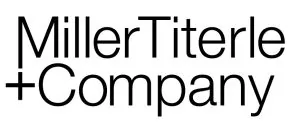Introduction
This Practice Guide provides a brief explanation of the meaning of “Mergers and Acquisitions” and a brief summary of some of the most common types of merger and acquisition transactions.
Mergers and Acquisitions, or “M+A”, may be used to refer to (i) a combination of two companies to form a new company; or (ii) the acquisition of another company, or the assets of a business by another person. The term encompasses a variety of different types of transactions, many of which are described below.
What is a “Merger”?
In a non-legal sense the term “merger” is often used to describe a situation where one entity (or its assets) becomes owned by the other. For example, a transaction pursuant to which one company acquires all of the shares or substantially all of the assets of another company may be referred to as a “merger”. Legally, however, a merger means the merger or “combination” of two or more companies to form or continue as one entity.
In Canada, the most typical form of legal merger is an “amalgamation”, which refers to a specific statutory procedure under Canadian corporate legislation pursuant to which two or more corporations “amalgamate” to form and continue as a single corporate entity. Amalgamations can be used as a method of achieving a “merger and acquisition” transaction, but that is not overly common. More commonly, an amalgamation may be utilized in connection with an M+A transaction (i.e., a share acquisition), for example, where an acquiring corporation acquires all of the shares of a target company and then amalgamates the target company with the acquiror.
A Canadian amalgamation is a different concept than a “merger” under the laws of other jurisdictions, such as the United States.
Since legally a “merger” contemplates two or more corporations combining and continuing as a single corporation, it is distinguishable from an “acquisition”.
What is an “Acquisition”?
An “acquisition” is used to describe the purchase or acquisition of one company or business (or control over that company or business) by another company or business. This can occur either through the acquisition of shares in the target company, or through the acquisition of assets of a business. An asset “acquisition” often involves the purchase of all or substantially all of the assets of a target company or business (subject to certain specified exclusions) and often the assumption by a buyer of at least some of the liabilities and obligations of the target business. An “asset acquisition” could, however, involve the acquisition of only the assets of a branch or division of a target company. In a share acquisition, acquisition of a majority (or more) of the outstanding shares of the target company effectively conveys control over the target company’s assets. The liabilities and obligations of the target company remain with it.
Purchasers under a share acquisition often wish to acquire all of the equity ownership of the target company. However, in some cases, such as acquisitions of “public” entities (but also, in some cases for acquisitions of “private” entities), an acquiror may acquire less than 100% of the outstanding shares. For example, in some cases an acquiror may acquire:
- at least 90% of the outstanding shares of a target company, with the intent of compulsorily acquiring the balance under statutory compulsorily acquisition provisions in applicable governing corporate legislation;
- at least two-thirds of the outstanding shares of a target company, often with the intent of being able to subsequently acquire the remaining shares in a “second stage” “going private” transaction; or
- more than 50% of the outstanding shares of a target company, providing the acquiror with “control” over the target company, including the ability to elect a majority of the directors.
Both under an asset acquisition and share acquisition, unless there is a subsequent amalgamation, dissolution or winding up of the target company, the target company continues to exist as a separate entity. Under a share acquisition, the target company may become a subsidiary of the acquiror. In either case however, the businesses are often effectively combined under the control of the acquiror.
Public and Private M+A
An acquisition transaction may involve the acquisition of a publicly listed or widely held target company (most typically a share acquisition), often referred to as a “public M+A” transaction. Where an acquisition transaction involves the acquisition of shares or assets of a privately held target company, that is referred to as a “private” M+A transaction. However, the latter may also simply be referred to as a “share purchase” or “share sale”, or “asset purchase” or “sale of business”.
Take Over Bids
Public M+A transactions are often effected pursuant to a “take-over bid” made by the acquiror. In general business terms, a “take-over” is a transaction whereby one person acquires control of a target company, typically by offering cash or securities (or a combination thereof) in exchange for shares of the target company. In this context, a take-over would include an acquisition by way of an amalgamation, or statutory “arrangement” (see below), as well as an offer (sometimes referred to as a “tender offer”) made to shareholders of the target company to purchase their shares, which requires acceptance by individual holders agreeing to sell their shares. This latter form of take-over is what is referred to as a “take-over bid”. Take-over bids are subject to detailed rules under the securities laws of the Canadian provinces.[1]
A take-over bid involves the offer to acquire outstanding voting securities or equity securities of a target company which, together with the offeror’s securities, constitute at least 20% of the securities of that class.
Regulation of Take over Bids
Briefly, take-over bid rules under applicable Canadian securities laws prescribe procedural requirements regulating the length of time take-over bids must be open (to provide holders adequate opportunity to consider the bid) and which are designed to ensure that security holders of a target company are treated fairly and equally and receive identical consideration, without collateral consideration to any holders, and require the shareholders be provided with prescribed information, which is provided in a “take-over bid circular”. The rules also require the directors of the target company to send a “directors’ circular” to target company security holders that includes a recommendation regarding the bid, or explaining why there is no recommendation.
There are additional rules that apply to issuer bids made by the issuer of the securities (e.g., the target company) and insider bids made by an insider, including a requirement in most cases, unless an exemption is available, for a formal valuation. There are also further rules applicable to pre-bid transactions (including requirements for “integration” of purchases made by the acquiror prior to making the take-over bid) and “early warning reporting” requirements requiring an acquiror to report acquisitions above specified thresholds. The prescribed rules include prescribed interpretative provisions which deem a person to beneficially own securities held by others, and imposing requirements in respect of other persons that are acting jointly or in concert with an acquiror.
The Canadian take-over bid rules are applicable to all target companies, including privately held companies, as well as public reporting issuers, if an offer is made to, or securities acquired from, a holder or person in Canada. For a more detailed summary of Canadian take-over bid rules see the “Canadian Take-Over Bid Rules - Overview” Practice Guides.
Acquisitions by way of Arrangement
As noted above, a “take-over” in the general business sense can be effected not only by way of a take-over bid or tender offer, but also by an acquisition effected by way of statutory amalgamation or “arrangement”.
An arrangement is a transaction that is effected under the target company’s governing corporate legislation and can take the form of transfers of shares or assets, exchanges of securities, compromises with shareholders or creditors, reorganizations of share capital, and other fundamental changes, including an amalgamation. An arrangement must be approved by a special resolution of the shareholders of the target company, either at a shareholders meeting, or pursuant to resolutions consented to in writing by all shareholders. If the arrangement is then approved by the court (which considers the fairness of the arrangement transaction) it is binding on shareholders of the target company, including holders that may have voted in favour, or voted against.
In a merger and acquisition context, arrangements are frequently used in friendly, non-hostile acquisitions by a buyer of all of the outstanding shares of a company, such as a “going private” transaction where the shares of a public company are acquired. They may also be used in acquisitions of privately held companies where the shares are widely held. For a more detailed summary of the use of arrangement transactions in public M+A transactions, see the “Statutory Business Combination Transactions” Practice Guide.
Private M+A Transactions
Although arrangements may be used in certain circumstances, private M+A acquisitions are typically effected pursuant to either an asset purchase agreement between the acquiror and the target company, or a share purchase agreement between the acquiror and all of the shareholders of the target company, who agree to sell their shares to the acquiror.
Conclusion
However defined, merger and acquisition transactions provide the opportunity for entrepreneurs or other owners of a target company business to realize on their investment, and for acquirors to grow and expand their business. They also present challenges, starting with pre-acquisition planning, structuring, due diligence, and negotiation of deal terms and other terms and conditions, through to closing and completion. The process requires a serious time commitment and diligent effort involving business people from both sides, as well as accounting, income tax, and legal advisors.
[1] Terms used in this Practice Guide which are in bold font are defined under such securities laws.







